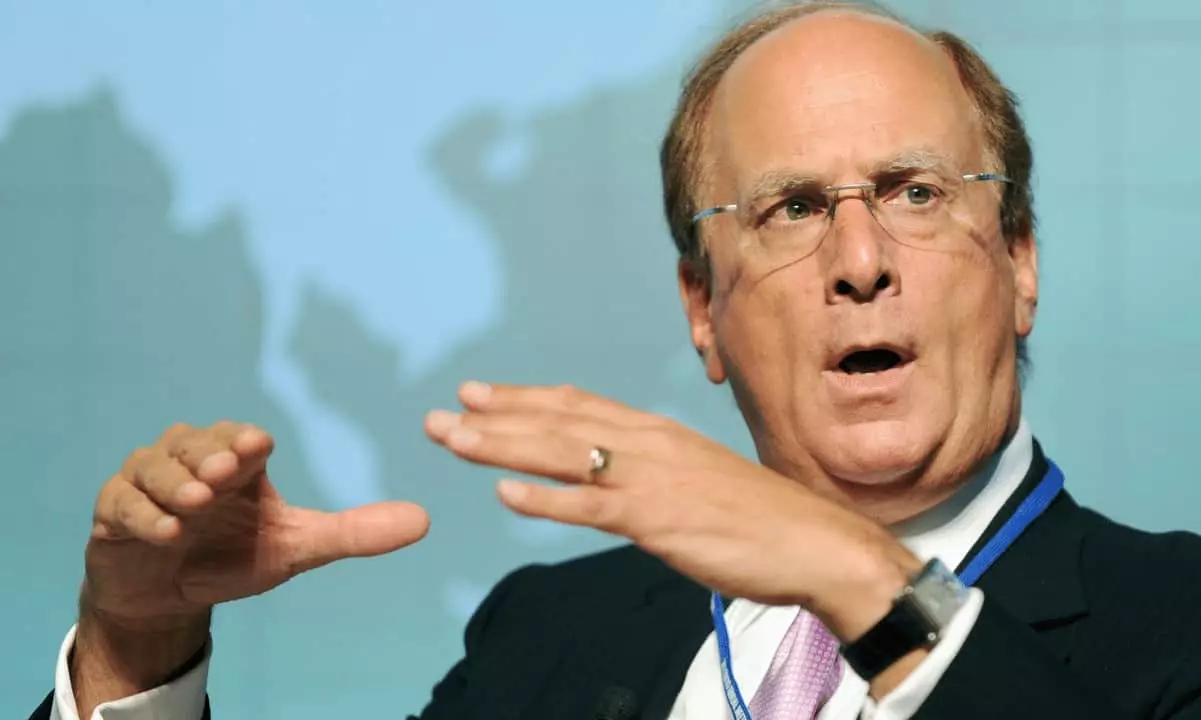Larry Fink, the CEO of BlackRock, has recently positioned Bitcoin (BTC) as a unique asset class, drawing parallels with gold in terms of investment potential. This assertion marks a significant shift in how institutional investors perceive digital currencies. During an earnings call, Fink articulated BlackRock’s stance that Bitcoin not only has a place among traditional commodities but is carving out its own identity within the financial landscape. Given the size and influence of BlackRock, this perspective could reshape investment strategies on a global scale, urging institutions to explore Bitcoin as a viable asset.
Fink’s insights extend beyond mere categorization; he emphasized that the growth and success of cryptocurrencies in the future will heavily depend on liquidity and transparency rather than just regulatory frameworks. This assertion reflects a mature understanding of market dynamics, suggesting that for digital assets to gain legitimacy, they must demonstrate robust trading environments and clearly defined governance. By positioning liquidity and transparency as fundamentals, Fink raises critical questions about the current state of the cryptocurrency market, hinting that improvements in these areas could mirror historical shifts seen in traditional finance.
Furthermore, Fink compared the evolving cryptocurrency space to the early stages of the mortgage market, where initial skepticism gave way to broader acceptance as data analytics improved. His statement serves as an encouraging sign for those who believe that cryptocurrencies, including Bitcoin, have the potential to expand significantly as analytical capabilities enhance. The analogy implies that, similar to past financial trends, once better tools to evaluate these digital investments become available, mass adoption could follow suit, propelling Bitcoin’s status within the financial ecosystem.
Fink also ventured into the territory of central bank digital currencies (CBDCs), pointing out the emerging trend of digitizing national currencies. The prospect of a digital U.S. dollar is particularly noteworthy, with Fink referencing positive examples from countries like India and Brazil. His remarks not only underscore a profound shift in how money may be perceived and utilized in the future but also demonstrate the interconnectedness of traditional and digital asset markets. As nations pilot CBDCs, the implications for Bitcoin and other cryptocurrencies could be substantial, potentially positioning them as complementary assets in a digitized financial world.
The timing of Fink’s comments aligns with a recent rally in Bitcoin Exchange-Traded Funds (ETFs), which saw substantial inflows in October. Notably, data indicated that spot Bitcoin ETFs absorbed nearly $556 million in new investments on a single day, reflecting a growing institutional interest. BlackRock itself has been at the forefront of this trend, launching its IBIT ETF earlier this year, which has contributed to Bitcoin’s price surge. This success illustrates how institutional engagement can revitalize the cryptocurrency market, creating a feedback loop where increased investment leads to higher prices and further interest.
Larry Fink’s emphasis on Bitcoin as a distinct asset class suggests a promising trajectory for cryptocurrencies within financial markets. His insights on liquidity, transparency, and the comparison to traditional markets indicate a mature understanding of how digital assets can evolve. As institutional players like BlackRock continue to explore and invest in Bitcoin and digital currencies, the landscape of finance may undergo transformative changes. These developments, paired with potential advancements in analytics and governance, could solidify Bitcoin’s role as a cornerstone of modern investing.


Leave a Reply